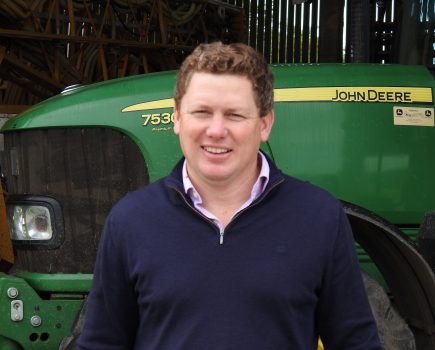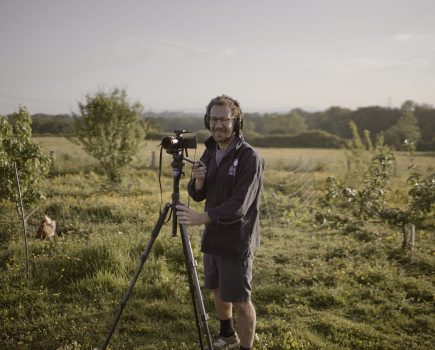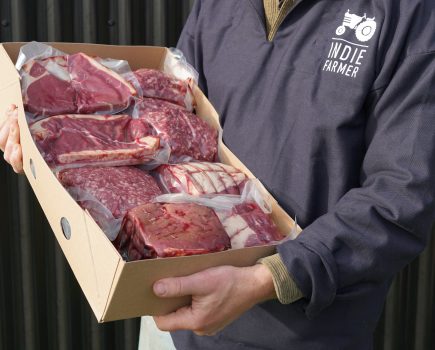The Sustainable Farming Incentive (SFI) and Countryside Stewardship have become considerably more appealing after the government released new information about the schemes. Kevin Jay, a Director of Sussex-based farm and environment consultants CLM, digests the detail…
Increased payment rates, up to 50 additional ‘actions’ and a single application service for SFI and Countryside Stewardship (CS) Mid-Tier payments were among the promises made by DEFRA Secretary Steve Barclay at the Oxford Farming Conference.
Putting aside the fact that no start date was given for these changes (and we all remember the SFI announcement in January 2023 which didn’t end up taking effect until September 2023), the speech was welcomed by farmers.
Some of the new payments represent huge increases and could present exciting opportunities for farmers in the South East. For those maintaining species-rich grassland on, for example, the South Downs or High Weald, the payment will jump from £182/ha to £646/ha. Meanwhile, those opting to manage and restore wet grassland either for wading birds or for wintering waders and wildfowl (say, on Pevensey Levels, North Kent Marshes or in the Adur or Ouse river valleys) will see a similar rise in the payment.
In fact, these updated rates will take some farmers towards a position that environmental schemes previously couldn’t do – namely, fill the hole left by falling Basic Payments revenue.
For one client on the South Downs, it seems likely that, for the first time since 2020, his total subsidy payment (BPS plus stewardship of all types) will be more in 2024 than it was in 2020 when BPS peaked. As another example, take a 60ha extensive grassland unit which would have been receiving nearly £14,000 BPS in 2020. In 2024, although the BPS cheque will be about half that, putting the grassland into a ‘manage with very low inputs’ SFI – along with taking a couple of other actions – will net about £11,000/annum, before the diminishing BPS cheque arrives.
As well as those looking to enter an agri-environment scheme for this first time, the increased money on offer through improved CS payments could also tempt people already in other schemes. One client has been receiving £23,000 a year from Higher Level Stewardship on 135ha. Every time the agreement has come up for an extension opportunity, we have reviewed the figures with the latest payment rates, but it’s never previously been worth submitting a new application for CS. Now the revenue would more than double from £20,000 under CS to £43,000 under CS Mid-Tier, and that’s before adding any additional SFI actions.
Other interesting elements of the DEFRA announcement include a new action, ‘connecting river and floodplain habitats’, worth £1,242/ha, plus a range of work involving agroforestry – for example, maintaining high-density infield agroforestry at £849/ha. The full detail on these options is yet to be announced, but the payment rates alone make them potentially interesting propositions.
There are now opportunities for farmers – dairy producers, say – who traditionally struggled to see how agri-environment schemes could fit their system, with payments of £102/ha for incorporating clover into intensive grass leys. It’s also worth noting the sums on offer annually for variable rate application of nutrients (£27/ha) and no-till (£72/ha). If they are approaches you are already taking, as many are, that’s nearly £100/ha for no extra work.
Of course, as is so often the case with DEFRA, there are still many unknowns. When exactly will all this take effect? What do the actions actually involve? Currently, there’s a distinct lack of detail.
The Government has suggested these changes could go live in the summer, but it’s not impossible we’ll have a May election (the Prime Minister’s hint it will be in the autumn could be a red herring to wrongfoot Labour) and, if so, there’ll be the pre-election period – formerly known as ‘purdah’ – during which the Government can’t make new announcements, which could cause a delay. And if Labour comes to power, they might not greenlight everything the Conservatives had lined up anyway.
My advice is to explore what SFI can offer your business right now and submit an application straight away if there are opportunities. If you wait for more detail, you could be waiting for months, if not longer, by which time you’ll have missed out on the payments. And because the money’s paid quarterly, you would have had it in your cashflow. It makes sense to take what you can now and then tweak your agreement as and when you can, and when you have a better appreciation of how it all fits with your system.
It could be that the Government has suddenly woken up to the value of the environment and realised it needs to pay farmers if all these beneficial changes are going to happen. Or it could be that the Government is simply trying to win the farmer-vote ahead of an election, with DEFRA desperately trying to spend its £3.1 billion agriculture budget so the Treasury doesn’t slash it in future. Either way, SFI and CS Mid-Tier are looking a whole lot more appealing and it’s well worth considering what this could mean for your business.







